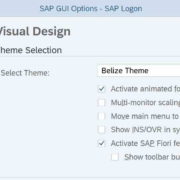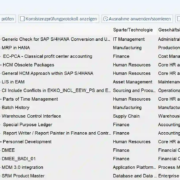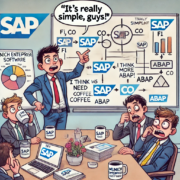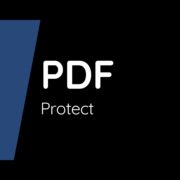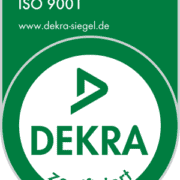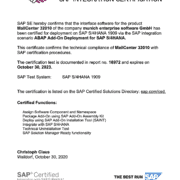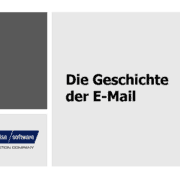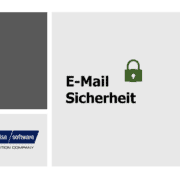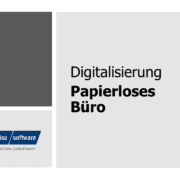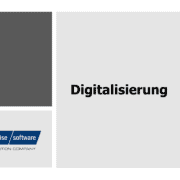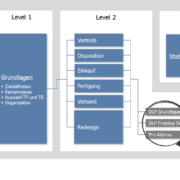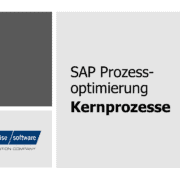The e-mail – from then until today
Contact details: telephone number, e-mail address, social media, then the postal address. The e-mail is an integral part of everyday life. But how did it all start? What do you know about the history of the email?
People have been communicating in writing for centuries. Paper is patient, and this also applies today to electronic stationery. We have researched,
Table of Contents
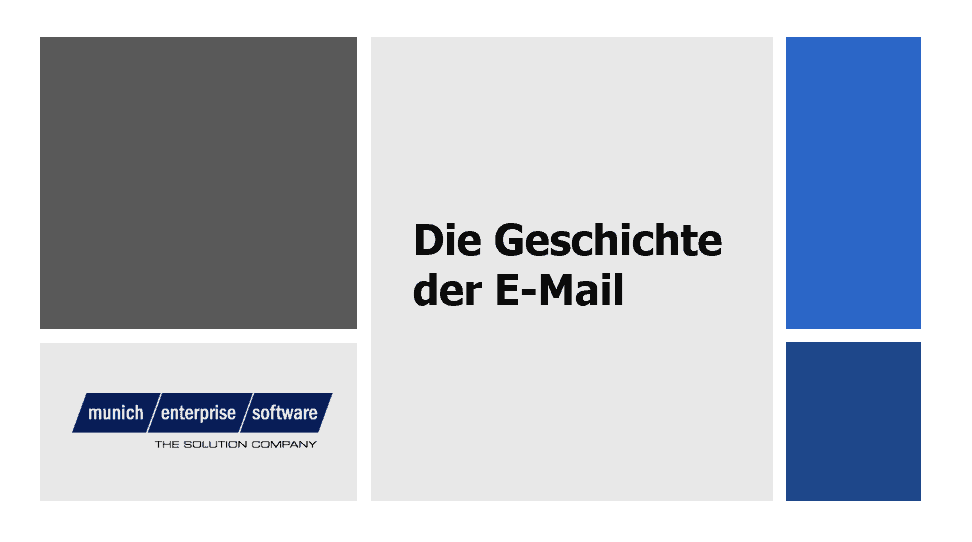
- when the first email was written,
- who sent them,
- why it happened,
- what content this very first electronic message had,
- and what development the e-mail has undergone to date.
The history of the e-mail is quite exciting, because the former gimmick has become a serious medium of communication!
E-mail – that’s how it started
E-mail is now a system of computer-based management of messages, which are usually written in a letter-like manner and transmitted over computer networks. However, e-mails are also called the messages themselves.
It wasn’t until the late 1980s that the email really came into use. It was one of the first applications to use the Arpanet. The initiators of Arpanet were more or less surprised by this, because they did not consider the possibility of sending electronic messages to be important. In 1967, Lawrence Roberts said that sending messages between network participants was “not an important motivation for a network of scientific computers.” (Quote taken from https://de.wikipedia.org/wiki/e-mail, last visited on 19.06.2020).
What is an email?
An e-mail (short for “electronic mail”) is a digital message sent over the Internet from a sender to one or more recipients. Similar to traditional mail, emails can contain text, images, file attachments, and other media.
An e-mail usually consists of various elements:
- Sender: The person or organization that sends the email.
- Recipient: The person or persons who should receive the email. It can be single recipients or distribution lists with multiple recipients.
- Subject: A short summary or headline that describes the content of the email.
- Message body: The body of the email in which the sender composes their message.
- Attachments: Files such as images, documents, or videos that can be sent with the email.
E-mails are sent and received through e-mail servers. The sender specifies the recipient’s e-mail address, and the e-mail is sent over the Internet to the appropriate server. The recipient’s e-mail server forwards the message to the correct inbox, and the recipient can then retrieve and read the e-mail in their e-mail program or webmail service.
This is the technique behind it
First of all, an e-mail address is required. This uniquely identifies the recipient of the e-mail and thus enables delivery. The e-mail address consists of the local-part, the s,A, and the domain-part. When you compose an email, type the text into a mask on your digital device. The mask will be displayed by your mail program. The program forwards the message, converted into a digital signal, over the Wi-Fi network to the public network. There, the message is sent to the mail server of the provider. The mail server forwards the e-mail to the addressee’s mailbox over the Internet. The (or) has installed an e-mail program on the smartphone. The program retrieves the e-mails at regular intervals via UMTS and the telecommunications provider. As soon as your e-mail has arrived, it will be automatically loaded onto the addressee’s smartphone.
The technical details would go beyond the scope of this blog post, so we’re limiting ourselves to an absolute minimum here. Emails consist only of text characters, i.e. 7-bit ASCII characters. This is determined by the RFC 5322. However, other characters can now be transferred – this is defined in other standards. Quoted Printable, for example, is such a standard—it allows the representation of the _Buchstaben “ß” (string: =DF). Maybe you’ve heard about the MIME standard? This is a whole series, and these standards are now very widespread. Because they also allow special characters and binary files. Technically, the size of an email is not limited. However, the systems that handle mail set limits. Providers, mail servers and providers can limit the size of a single e-mail at any time
Precursor of the email
Of course, the idea of sending messages from one computer to another on an existing network has a history – technology had to give it up first. In fact, the email has a precursor. This was the MAIL system command that the Multics extension had for MIT’s CTSS time-sharing system. Glenda Schroeder, her colleague Louis Pouzin and Pat Crisman, who was also involved, had already proposed this in 1964/65, and in 1965 the extension was also implemented by Tom Van Vleck.
In 1968, J.C R. Licklider suggested sending messages within the Arpanet. The developers discussed this possibility in detail, as can be read in the Mail Box Protocol by Richard W. Watson of July 20, 1971. Multics was connected to the Arpanet in October 1971 and it already contained a mail program to enable users to communicate with each other. At the beginning of 1972, a standalone mail program was implemented, so Arpanet now officially had this option. This was the case with the MAC Networking Group under the leadership of Mike Padlipsky.
Who is the inventor of the email?
Ray Tomlinson was part of the research company Bolt, Beranke and Newman (BBN), where the TENEX network was developed. The system was available on many computers connected in the Arpanet. Tomlinson was involved in the transmission of messages via the Program SNDMSG, which was available to the users of the mainframe. He was also involved in the CPYNET protocol. CPYNET made it possible to transfer files from one computer to another. These programmes came up very early, they existed since the early 1960s. However, they were still very rudimentary when compared to later mail programs. But at least they made it possible to insert text into the mailbox of other users of the computer. At the time, a mailbox was a single file that could only be read by a single user.
In 1971, Tomlinson modified CPYNET to allow him to add existing files. He worked in SNDMSG. And that led to the first e-mail ever!
What was in the first email?
Tomlinson used this technique to send a message to his colleagues: he informed them in this very way that it was now possible to send messages over the network. He gave the instruction to write an address in a specified order: user name of the addressee, s, host name of the computer.
But was that an e-mail that we would call such today? Or shouldn’t this first shared message be called a shared file? The Arpanet developed into the Internet in the early 1980s. At the same time, most of these network systems were created, allowing users to transmit messages. These were early mailbox systems such as X.25 or Novell as well as BTX. In the mid-1990s, these systems were greatly displaced, as the Internet spreads.
The first Internet e-mail received in Germany (i.e. an e-mail sent over the Internet instead of Arpanet) went on 3 August 1984 at 10:14 CET with Michael Rotert at the University of Karlsruhe. The e-mail address: rotert@germany. It was sent by Laura Breeden from the address breeden@csnet-sh.arpa via the US platform SNET from Cambridge, which was sent on 2 August 1984 at 12:21. At the same time, a copy as CC went to Werner Zorn (zorn@germany), who was the head of the project. And what was the content of this first real email?
“Welcome to CSNET! Michael, This is your official welcome to CSNET.” (Quote taken from https://de.wikipedia.org/wiki/e-mail, last visited on 19.06.2020)
From e-mail to mailing list
Today, e-mail is usually sent using SMTP. Different protocols such as POP3, IMAP, and Webmail allow retrieval from the target server. The open standards X.400 are sometimes used in the LAN or WAN. But by the time it got there, it was a long way …
In the Arpanet, a mailing list entitled SF-LOVERS had already been formed in the 1970s. This was undesirable, because a public discussion of science fiction had nothing to do with the research objectives. The list was blocked, but later reopened as a pilot project. It was used to research the administration and operation of large mailing lists. To this day, a mailing list offers a closed group of people the chance to exchange messages in letter form. Only within this group are the messages public. Newsgroups and Internet forums are, in fact, a further development of mailing lists.
The participants in a mailing list are usually equal. As tools for multi-directional communication, mailing lists are still the means of choice. Technically, a mailing list is a list of email addresses that itself has an email address. This allows the members of the mailing list to write to each other quite easily. Knowledge of the various e-mail addresses involved is not necessary, because the mail transfer agent forwards any message received to the address of the mailing list to all members of the list.
E-mail usage statistics: Who sends what when and why?
E-mails have become the most important communication medium of all. In 2014, the Germans sent a total of about 506.2 billion e-mails. In 2015, there were an estimated 4.353 billion email accounts worldwide, which were actually used by 2.586 billion users. And just over 81 percent of all Germans used e-mails in one way or another in 2015. According to Statista, 86 percent of Germans in 2019, with the trend moving away from the desktop and laptop and towards smartphones. Forecasts assume that the use of e-mails in Germany will continue to increase. German email providers hold a market share of just under two-thirds, followed by Gmail and Outlook (to be read in the https://blog.wiwo.de/look-at-it/2019/11/06/totgesagte-leben-laenger-deutsche-verschicken-immer-mehr-e-mails-web-de-gmx-vorn/, last visited on 23.06.2020).
Of course, only a small fraction of these messages are really relevant and desirable. About 90 percent of all e-mails sent worldwide are spam, i.e. waste or plunder. These emails are sent unsolicited and in most cases simply contain advertisements. For December 2019, Statista reports 55.3% spam for mailboxes of companies worldwide, the other months of 2019 are also 54% to 55.4% (see publication by https://de.statista.com/statistik/daten/studie/446308/umfrage/spam-anteil-weltweit-in-unternehmen/, last visited on 23.06.2020). It is assumed that most e-mails that end up in German mailboxes of a private nature are newsletters. Order and shipping confirmations from online shops ranked second in 2019. Communication by e-mail is part of everyday life, but as with the analogue letter, the proportion of “mailings” (respectively advertising) is quite high …





